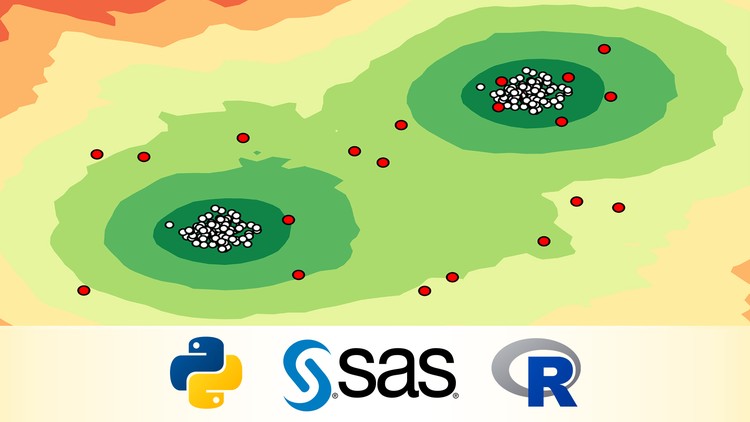Outlier Detection Algorithms in Data Mining and Data Science

Why take this course?
🛣️ Course Title: Outlier Detection Algorithms in Data Mining, Data Science, Machine Learning, Data Analysis, and Statistics using PYTHON, R, and SAS
Headline: Master Outlier Detection Techniques for Data-Driven Decision Making!
Course Description:
🎉 Welcome to the Course "Outlier Detection Techniques"! 💻
Why Outlier Detection Matters:
Outliers can make or break your data analysis, leading to either robust insights or flawed conclusions. Detecting anomalies is not just a statistical exercise; it's a critical step in:
- Data Mining: Uncover the hidden patterns and relationships within large datasets.
- Machine Learning: Improve model accuracy by identifying and addressing outliers.
- Data Science: Make data-driven decisions with greater confidence.
- Pattern Recognition: Distinguish between noise and meaningful patterns.
- Data Cleansing: Clean your dataset by removing erroneous data points.
- Data Warehousing: Ensure the integrity of large-scale storage systems.
- Data Analysis and Statistics: Validate assumptions and inferential statistics reliably.
Learning Approach:
In this course, I emphasize a deep understanding of outlier detection methodologies over just programming. However, for those who are keen on honing their coding skills, I've developed implementations of all algorithms in R, Python, and SAS, which you can download and run as part of your learning journey.
Curriculum Overview:
📊 Univariate Space:
- Three Sigma Rule (Statistics - R + Python + SAS)
- MAD (Statistics - R + Python + SAS)
- Boxplot Rule (Statistics - R + Python + SAS)
- Adjusted Boxplot Rule (Statistics - R + Python + SAS)
📈 Low-dimensional Space:
- Mahalanobis Rule (Statistics - R + Python + SAS)
- LOF (Local Outlier Factor) (Data Mining - R + Python + SAS)
🔀 High-dimensional Space:
- ABOD (Angle-Based Outlier Detection) (Data Mining - R + Python + SAS)
Join us on this insightful journey into the world of outlier detection! With hands-on experience and a focus on practical applications, you'll be well-equipped to identify, understand, and act upon the anomalies in your data. 🎓
Course Gallery




Loading charts...